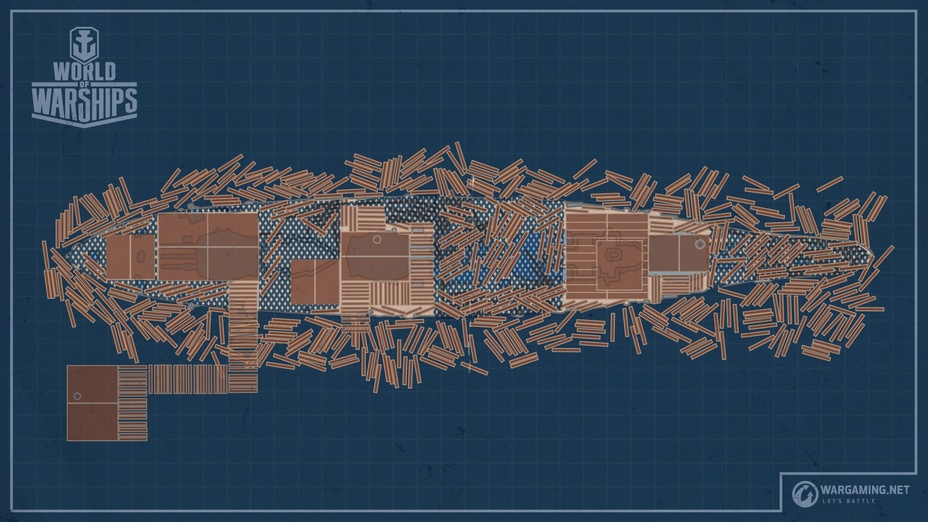In the pre-war period, camouflage in the Soviet Navy was an exception rather than a rule. Nevertheless, you can still encounter quite interesting paint patterns remaining on some ships from the World War I era, for example, the «shrapnel» camouflage on destroyer Lenin or the «dazzling» camouflage on destroyer Rykov.
At the same time, the majority of ships were painted according to a single standard in a uniform flint gray color. Destroyer leader Tashkent stood out from the bland mass thanks to the default Italian paint that she wore. As a result she was nicknamed «blue cruiser» and «blue beauty» because of her flint gray color with a blue shade.
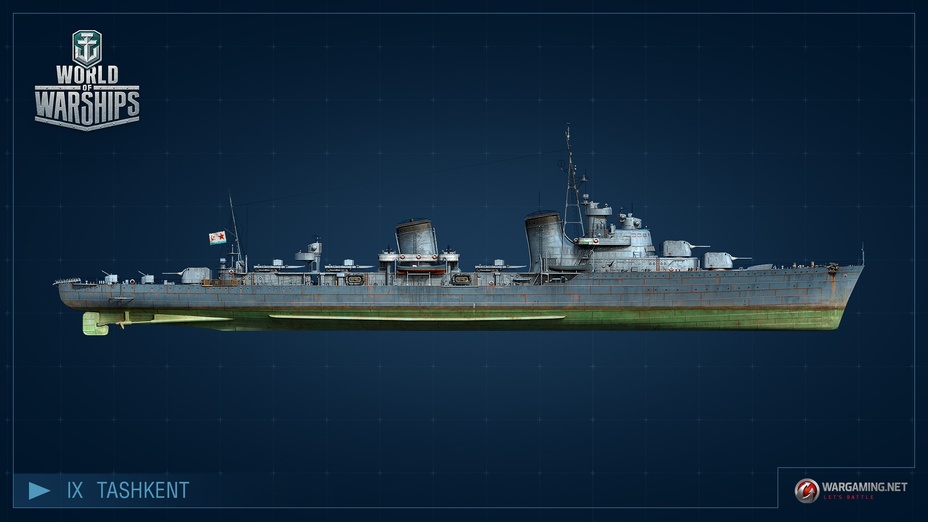
With the beginning of World War II, the Navy began to implement complex paint schemes. During this period, apart from the classic flint gray paint, Soviet ships used different camouflage patterns, both adopted from the Allies and developed independently.
The Black Sea fleet used the so-called «silver paint» (based on aluminium powder) in addition to the usual oil paints. It reflected the color of water, which made its application more versatile, because the painted parts of a ship changed their shade depending on the weather and lighting conditions. Among the ships sporting this paint were cruiser Molotov and minelayer Komintern—the refitted armored cruiser Kagul of the Russian Imperial Navy. Light cruisers of the Pacific fleet Kalinin and Lazar Kaganovich also received the same camouflage pattern.
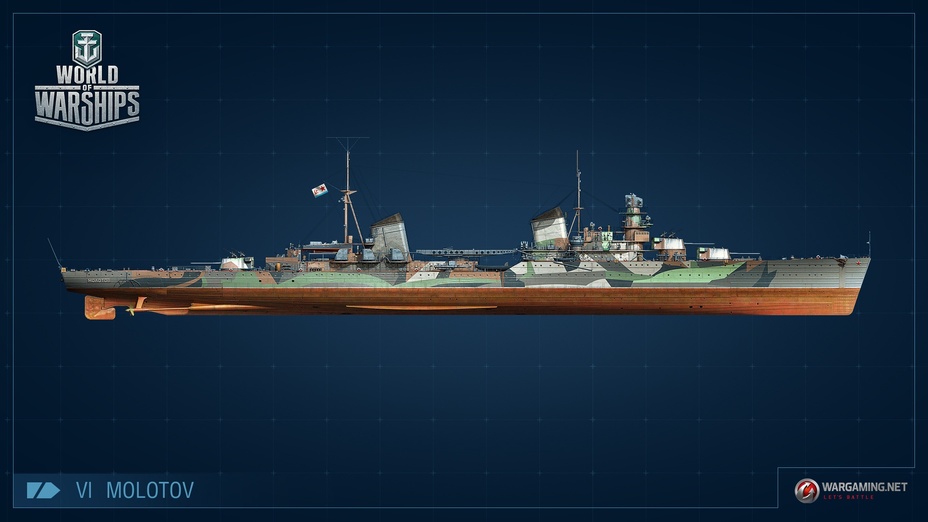
Several ships on the Black Sea were given a complex paint pattern with shading— the tone gradually changed from a darker color to a lighter one. This scheme was applied to destroyers Bodriy and Soobrazitelniy. The Northern fleet's ships used camouflage patterns similar to those of British ships, which allowed for an easier visual identification when escorting convoys. With the outbreak of the war, destroyer Gremyashchy was one of the first to receive camouflage painting, which combined elements of the dazzling camouflage with spots and colors close to those used on Allied ships.
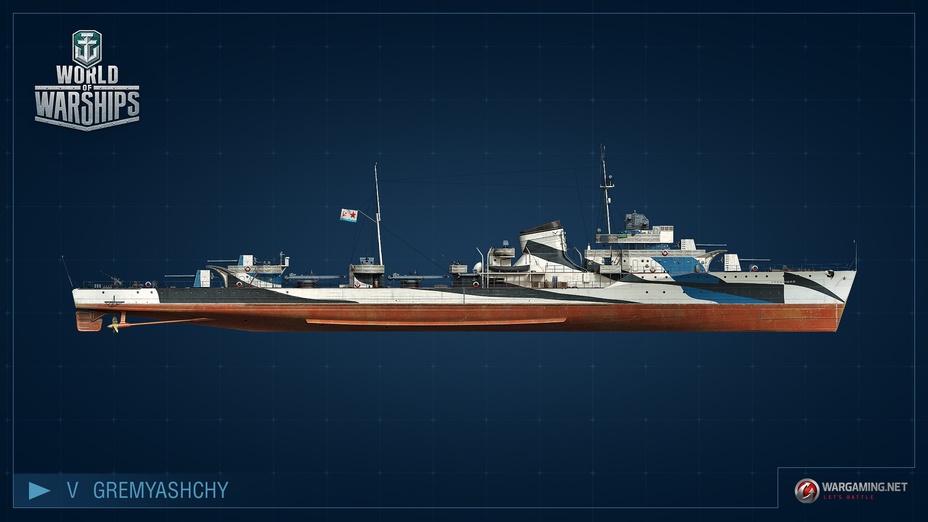
There were several ways to coat the underwater part of a ship. Apart from the red lead that was widespread in many navies, coal-tar varnish was used—a special solution of varnish bitumen that formed a glossy black or black and brown coating, resistant to weathering and protecting the ship's surface against corrosion and fungi. Another method suggested the use of an antifouling composition called International of dark red and green colors that had properties similar to the previous solution.
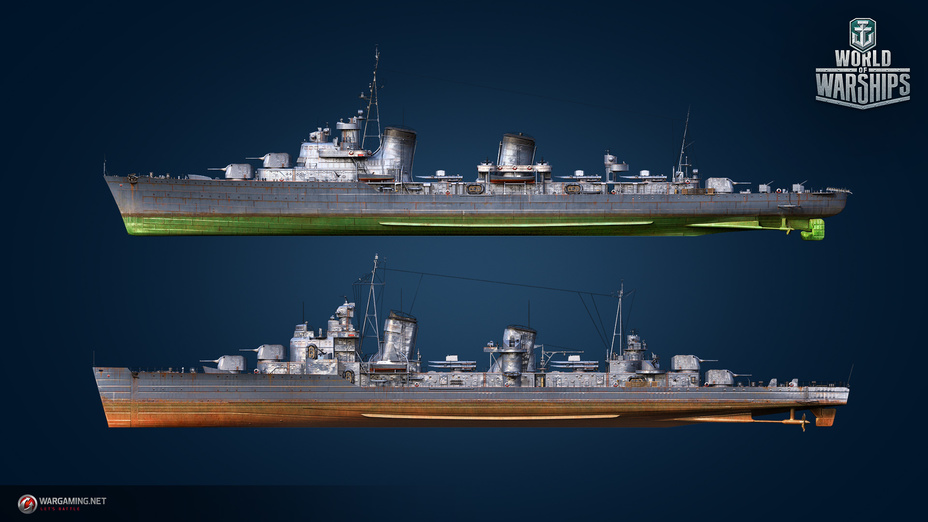
Submarines were also painted flint gray with shades varying from light gray to dark gray. Submarines could be entirely one-color or they could have their waterlines and underwater parts painted in the colors of the anticorrosive agents as described above.
Cargo ships and auxiliary vessels were often painted in complex-pattern camouflages. Apart from concealment coloring, so-called «decorative» camouflaging was widespread, which used various additional elements in order to imitate shore objects or even enemy ships. For example, several small hunter ships of the Black Sea were disguised as German boats.
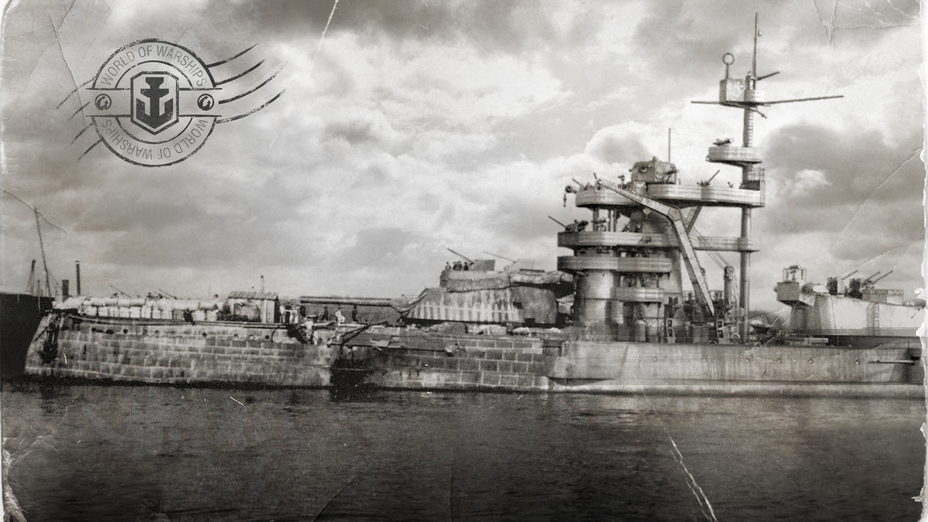
During the Siege of Leningrad, the ships of the Baltic fleet were given a special camouflage to make it harder for the German air reconnaissance to discover them and to protect the ships against artillery fire at least to some degree. Thus, thanks to the efforts of painter Boris Smirnov, many warships visually became barracks, piles of garbage, or even parts of the embankment.
